Announcements
Montana Natural Heritage Program Releases Montana Beaver Restoration HUB
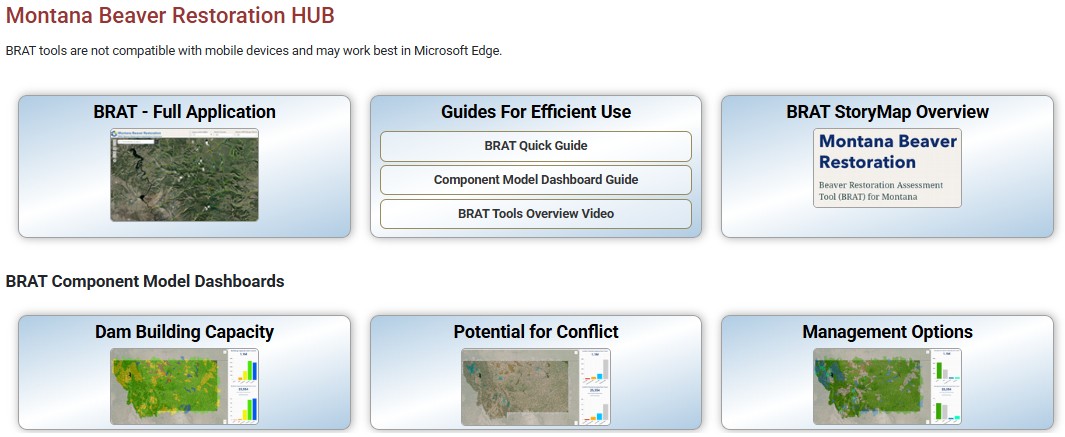
The Montana Natural Heritage Program (MTNHP), in partnership with Montana Fish, Wildlife and Parks and the Montana Beaver Working Group is pleased to announce the release of the new Montana Beaver Restoration (BRAT) HUB on MTNHP's Dashboards and Tools webpage:
https://mtnhp.mt.gov/webapps/dashboards#brat
The BRAT HUB is a series of tools to help researchers, restoration practitioners, and resource managers assess the potential for beaver as a stream conservation and restoration agent over watersheds of various sizes across Montana and includes:
- Output metrics from the Beaver Restoration Assessment Tool
- Summary dashboards for Dam Building Capacity, Potential Conflict, and Management Options
- A storymap overview of all tools
- Quick guides and an introductory overview video
Montana Natural Heritage Program Releases New Website
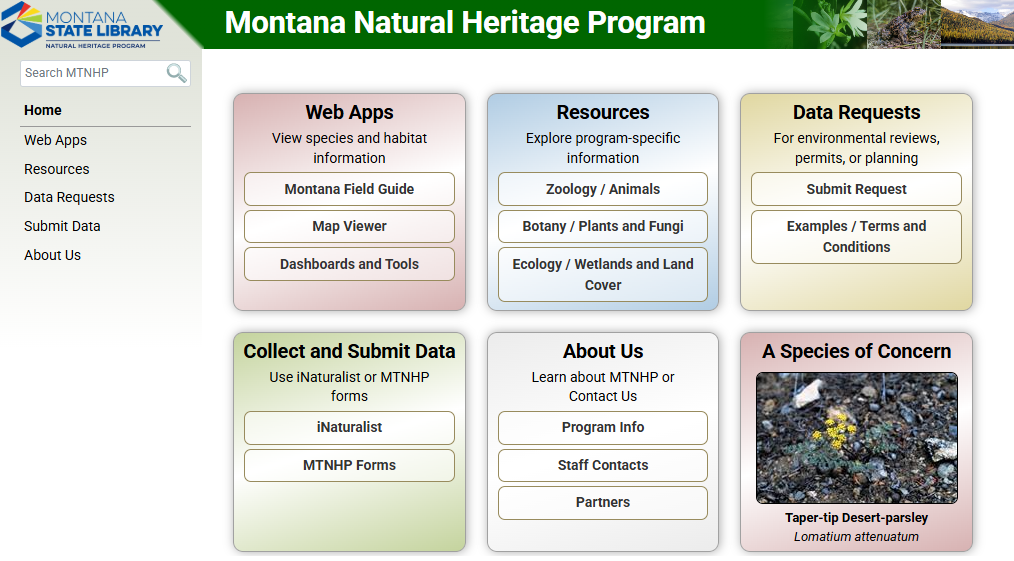
The Montana Natural Heritage Program is pleased to announce the release of our new website: https://mtnhp.mt.gov/
Special thanks to our partners for supporting us in being Montana's source for reliable and objective information on species and habitats of Montana!
An Analysis of the Montana Citizen Botany Pilot Study 2022-2024
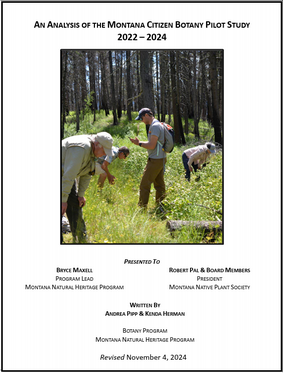
Montana Native Plant Conservation Strategy Published
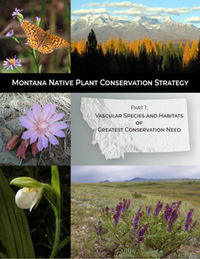
The Montana Native Plant Conservation Strategy: Vascular Species and Habitats of Greatest Conservation Need (GCN) has just been published after six years of work by a diverse group of partners. Its purpose is to promote the collective and coordinated stewardship of Montana’s native flora and habitats, emphasizing native Plant Species, Unique Habitats, and Plant Communities of Greatest Conservation Need (GCN).
This publication represents collective input from a large partnership of people and organizations that share a vested interest in Montana's flora and habitats. It was written by a Core Team of people representing federal and state agencies, Tribal nations, non-governmental organizations, academic herbaria, and individuals. Andrea Pipp, Program Botanist with Montana State Library’s Natural Heritage Program (MTNHP) serving on this team said, “This Strategy is Montana’s most proactive, comprehensive approach to advance native plant conservation across the state to benefit all people, including our economy and educational system, and of course our irreplaceable native flora and fauna”.
There is growing concern about how to retain our state’s rich native plant diversity and genetics, rare species, unique habitats, and iconic plant communities. The goals of the Strategy, and the partnership behind it, are to conserve Montana’s Native Plant Species, Unique Habitats, and Plant Communities of GCN and ameliorate five constraints that have hindered plant conservation:
- Insufficient current data and mapping of native plant populations, habitats, and communities, especially those of conservation concern
- Declining recognition for botanical expertise and appreciation for plants
- Limited funding allocated to native plant conservation
- Inadequacy of policy-related and regulatory mechanisms to manage native plants and habitats
- Increasing threats to native plants, habitats, and communities from natural events and human activities
Explore the full strategy here: The Montana Native Plant Conservation Strategy
2023 BLM Conservation Partner Award
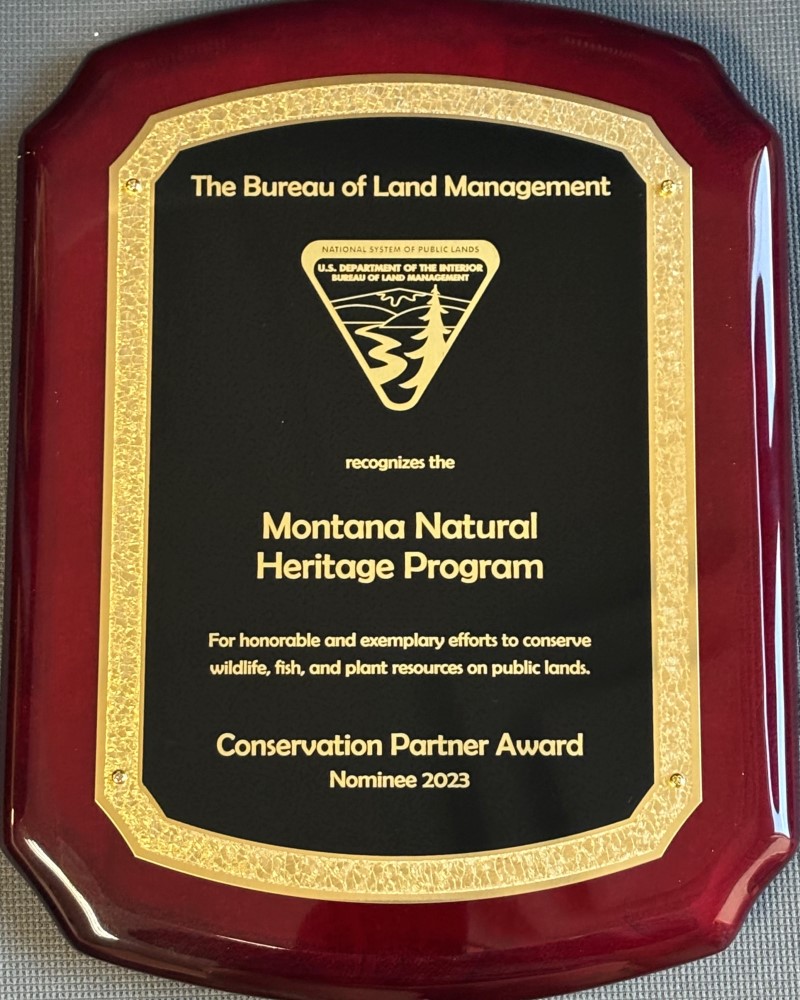
2024 NatureServe Network Award for Innovation
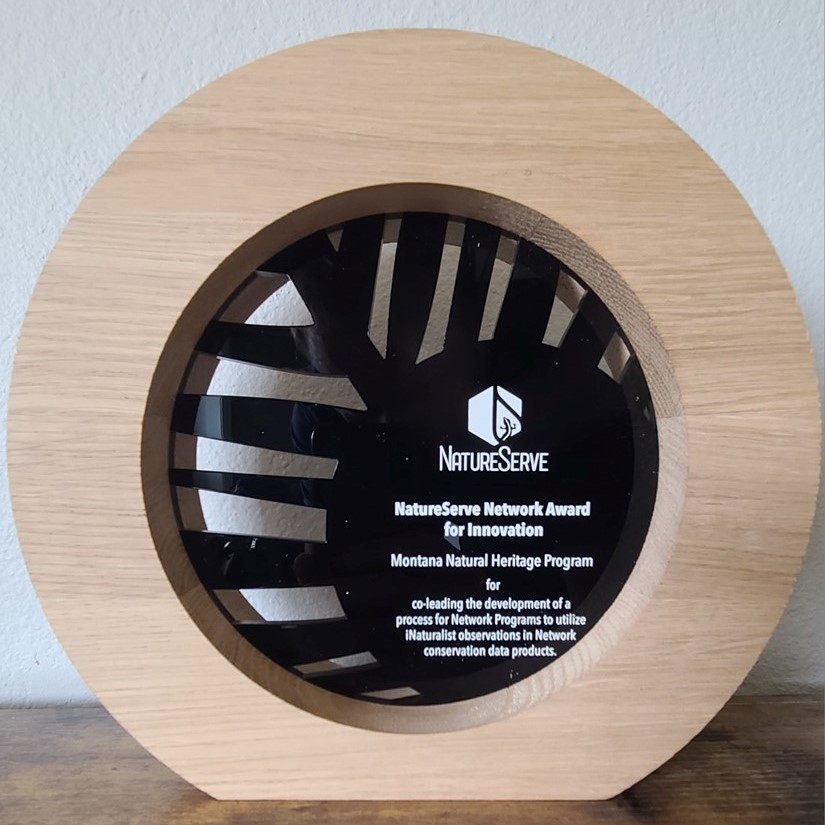
MTNHP Hosts Conference of Western Natural Heritage Programs
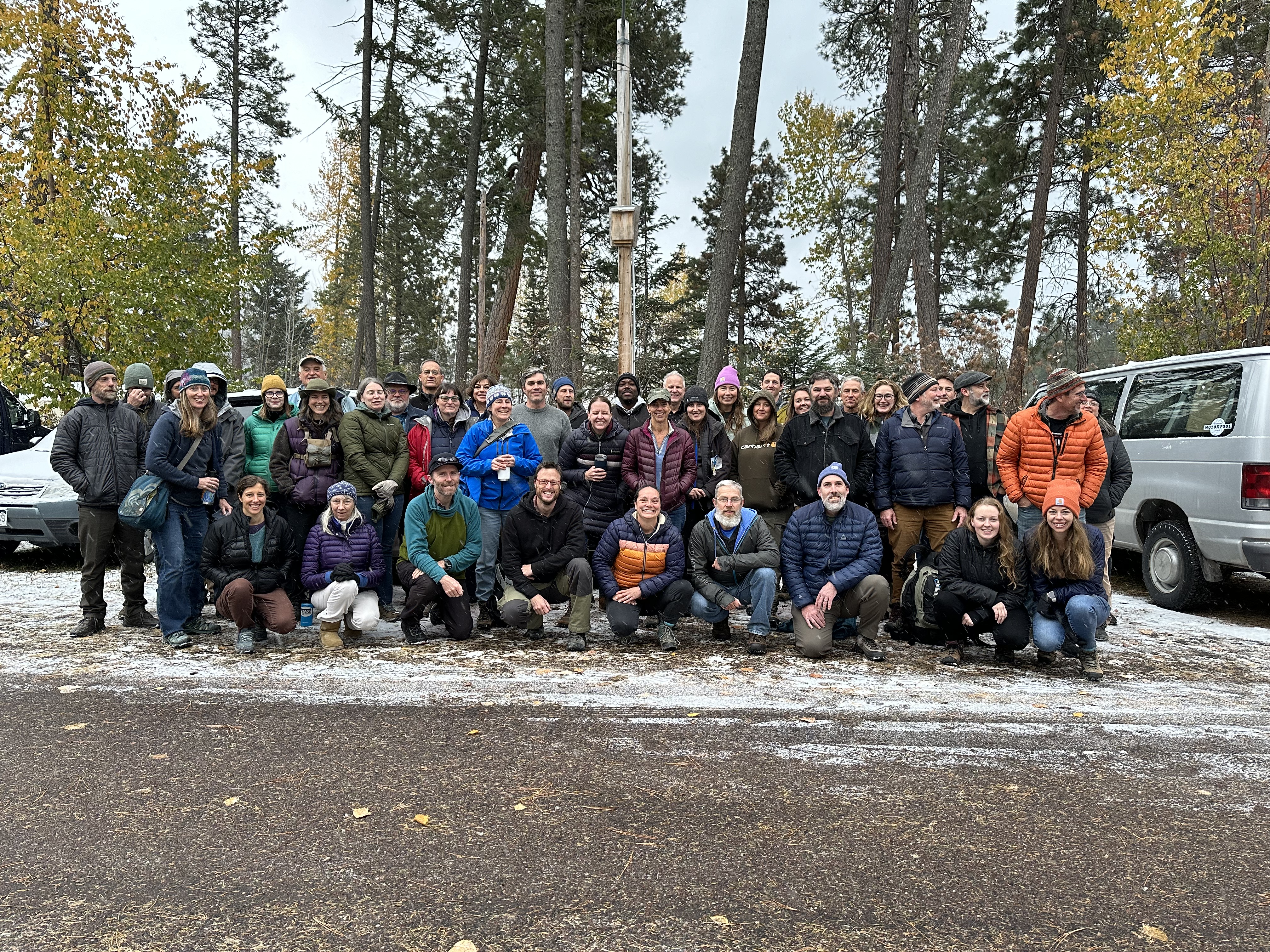
Map Viewer Training Videos
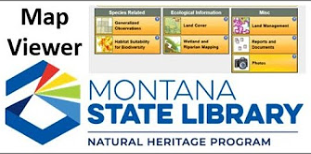
Video Playlist on Ways to Submit Data to MTNHP


